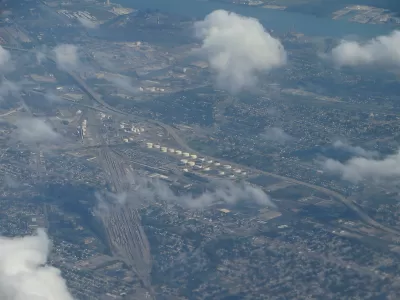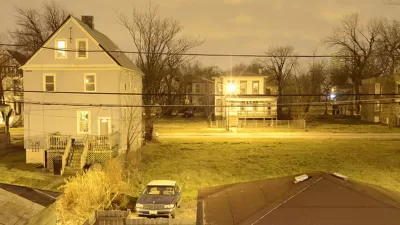Despite the decades-long activities of environmental justice advocates in the Motor City, low-income and people of color bear the brunt of pollution in Detroit.

Drew Costley writes in-depth on the growing environmental justice concerns in Detroit, where the city's most vulnerable residents are facing growing environmental risks in the air and water.
Environmental problems pervade the city of Detroit, the Blackest city in the United States, but particularly neighborhoods populated predominantly by low-income and people of color, and environmental risk is connected to larger concerns about environmental quality. "Detroit is a microcosm of the national and global crisis on climate change," says Michelle Martinez, coordinator of the Michigan Environmental Justice Coalition, which lobbies for a safer environment for the state’s most vulnerable groups.
Four of the state's top emitters of particulate matter sulfur dioxide and nitrous oxides are located in one zip code in the city, 48217, according to Costley. "A portion of I-75, one of the busiest highways in Michigan, runs along the northern border of the neighborhood. The neighborhood is nine minutes from the traffic-choked Ambassador Bridge, the busiest international border crossing in North America. Plans to open the new Gordie Howe International Bridge next to the Ambassador Bridge in 2020 are expected to increase diesel truck traffic by 125%."
The feature-length article visits numerous specific examples of polluters and the individuals living with the pollution, as well as the advocates fighting for environmental justice. The article is the first in a series published by OneZero titled "Black in the Time of Climate Change."
FULL STORY: The Blackest City in the U.S. Is Facing an Environmental Justice Nightmare

Montreal Mall to Become 6,000 Housing Units
Place Versailles will be transformed into a mixed-use complex over the next 25 years.

Planetizen Federal Action Tracker
A weekly monitor of how Trump’s orders and actions are impacting planners and planning in America.

DARTSpace Platform Streamlines Dallas TOD Application Process
The Dallas transit agency hopes a shorter permitting timeline will boost transit-oriented development around rail stations.

Interactive Map Reveals America's “Shade Deserts”
Launched by UCLA and American Forests to combat heat-related deaths, the tool maps the shade infrastructure for over 360 U.S. cities.

Bicycles and Books — In Sacramento, Libraries Now Offer Both
Adult library card holders can check out e-bikes and e-trikes for up to one week.

Colorado Landfills Emit as Much Pollution as 1M Cars
Landfills are the third-largest source of methane pollution in Colorado, after agriculture and fossil fuel extraction.
Urban Design for Planners 1: Software Tools
This six-course series explores essential urban design concepts using open source software and equips planners with the tools they need to participate fully in the urban design process.
Planning for Universal Design
Learn the tools for implementing Universal Design in planning regulations.
City of Mt Shasta
City of Camden Redevelopment Agency
City of Astoria
Transportation Research & Education Center (TREC) at Portland State University
US High Speed Rail Association
City of Camden Redevelopment Agency
Municipality of Princeton (NJ)





























